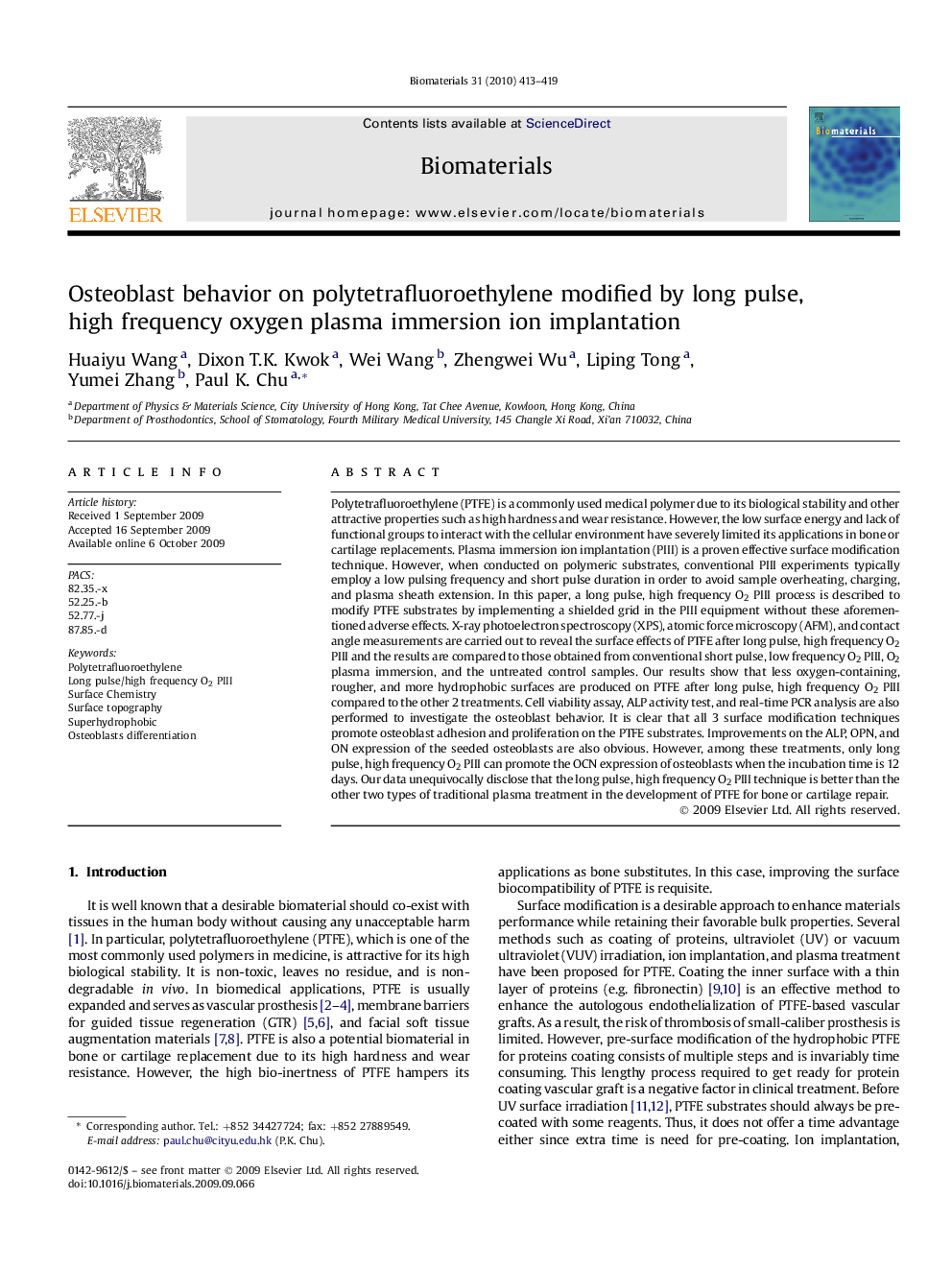| کد مقاله | کد نشریه | سال انتشار | مقاله انگلیسی | نسخه تمام متن |
|---|---|---|---|---|
| 8502 | 595 | 2010 | 7 صفحه PDF | دانلود رایگان |

Polytetrafluoroethylene (PTFE) is a commonly used medical polymer due to its biological stability and other attractive properties such as high hardness and wear resistance. However, the low surface energy and lack of functional groups to interact with the cellular environment have severely limited its applications in bone or cartilage replacements. Plasma immersion ion implantation (PIII) is a proven effective surface modification technique. However, when conducted on polymeric substrates, conventional PIII experiments typically employ a low pulsing frequency and short pulse duration in order to avoid sample overheating, charging, and plasma sheath extension. In this paper, a long pulse, high frequency O2 PIII process is described to modify PTFE substrates by implementing a shielded grid in the PIII equipment without these aforementioned adverse effects. X-ray photoelectron spectroscopy (XPS), atomic force microscopy (AFM), and contact angle measurements are carried out to reveal the surface effects of PTFE after long pulse, high frequency O2 PIII and the results are compared to those obtained from conventional short pulse, low frequency O2 PIII, O2 plasma immersion, and the untreated control samples. Our results show that less oxygen-containing, rougher, and more hydrophobic surfaces are produced on PTFE after long pulse, high frequency O2 PIII compared to the other 2 treatments. Cell viability assay, ALP activity test, and real-time PCR analysis are also performed to investigate the osteoblast behavior. It is clear that all 3 surface modification techniques promote osteoblast adhesion and proliferation on the PTFE substrates. Improvements on the ALP, OPN, and ON expression of the seeded osteoblasts are also obvious. However, among these treatments, only long pulse, high frequency O2 PIII can promote the OCN expression of osteoblasts when the incubation time is 12 days. Our data unequivocally disclose that the long pulse, high frequency O2 PIII technique is better than the other two types of traditional plasma treatment in the development of PTFE for bone or cartilage repair.
Journal: Biomaterials - Volume 31, Issue 3, January 2010, Pages 413–419